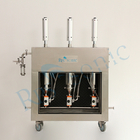
loading
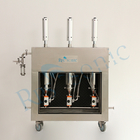

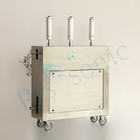

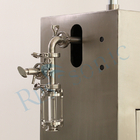

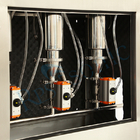

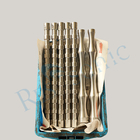

| Quantity: | |
| Place of Origin | China |
|---|---|
| Brand Name | Rps-sonic |
| Certification | CE |
| Model Number | RPS-SONO20-3 |
| Minimum Order Quantity | 1pcs |
| Price | negotiable |
| Packaging Details | CARTON |
| Delivery Time | 1DAYS |
| Payment Terms | T/T |
| Supply Ability | 200PCS/MONTH |
| Frequency | 20Khz | Power | 3000w*3 In Max |
|---|---|---|---|
| Horn Material | Titanium | Horn Size | Customized |
| Generator | Digital | Package | Wooden |
| Warranty | One Year | Weight | 300kg |
| High Light | CBD Oil Ultrasonic Extraction Equipment,Ultrasonic Extraction Equipment 20Khz,CBD Oil Extracting Ultrasonic Liquid Processor | ||
20Khz three in one Ultrasonic Extraction equipment for CBD oil extracting
Parameter
| Model | SONO20-1000 | SONO20-2000 | SONO15-3000 | SONO20-3000 |
| Frequency | 20±0.5 KHz | 20±0.5 KHz | 15±0.5 KHz | 20±0.5 KHz |
| Power | 1000 W | 2000 W | 3000 W | 3000 W |
| Voltage | 220/110V | 220/110V | 220/110V | 220/110V |
| Temperature | 300 ℃ | 300 ℃ | 300 ℃ | 300 ℃ |
| Pressure | 35 MPa | 35 MPa | 35 MPa | 35 MPa |
| Intensity of sound | 20 W/cm² | 40 W/cm² | 60 W/cm² | 60 W/cm² |
| Max Capacity | 10 L/Min | 15 L/Min | 20 L/Min | 20 L/Min |
| Tip Head Material | Titanium Alloy | Titanium Alloy | Titanium Alloy | Titanium Alloy |
Description
Ultrasonic extraction technology is the preferred technique for isolating bioactive compounds from plants. Ultrasound refers to those mechanical sound waves with frequencies above 20 kHz but less than 10 MHz. Ultrasonic extraction typically uses a smaller frequency range (16 kHz-100 kHz), as higher frequencies can lead to excess energy, which can lead to degradation of active components in plant structures.
Sonication enables complete extraction, resulting in high extraction yields in very short extraction times. As an efficient extraction method, ultrasonic extraction saves both cost and time while yielding high-quality extracts for use in food, supplements, and pharmaceuticals.
Working principle
Ultrasonic extraction is based on the working principle of ultrasonic cavitation and is a purely mechanical treatment. Similar to high shear mixers, sonotrodes generate mechanical shear forces only in the process medium. Ultrasonic extraction itself is a non-thermal, chemical-free extraction technique.
Ultrasonic cavitation is sonic or ultrasonic cavitation that occurs at high power, based on repeated high and low pressure cycles. The alternating high and low pressure cycles of sonication 20,000 times per second create intense shear forces and liquid jets. This extreme stress overcomes the selectivity of the membrane, perforates and disrupts the cell wall, and results in high-quality transport between the inner cell and the surrounding solvent. With ultrasonic extraction, higher yields and shorter extraction times can be achieved. Since ultrasonic extraction is a repeatable process, extraction results can be repeated for standardized extraction quality.
Ultrasonic cavitation can locally lead to extreme conditions such as very high differential pressures and high shear forces. When cavitation bubbles burst onto the surface of solids (e.g. particles, plant cells, tissues, etc.), microjets and inter-particle collisions can produce effects such as particle rupture, sonoporation (perforation of cell walls and membranes), and cellularity. Furthermore, the bursting of cavitation bubbles in liquid media creates turbulence and agitation, which facilitates mass transfer between the interior of the cell and the surrounding solvent. Ultrasonic radiation is an efficient way to enhance mass transfer processes, as ultrasound induces cavitation and its associated mechanisms, such as micromotion induced by liquid jets, compression and decompression in materials and subsequent cell wall disruption.
Effects of Ultrasonic Extraction
Ultrasonic Cell Disruption and Increased Mass Transfer Ultrasound can assist the extraction process by cell disruption and enhanced mass transfer in the boundary layer around the solid matrix. As a perforation of cell walls and membranes, ultrasound can enhance the permeability of cell walls and membranes, often an intermediate step before cells are completely destroyed by ultrasound.
Mechanical effects of ultrasound-induced cavitation, such as heat and pressure differences, shock waves, shear forces, liquid jets, and microfluidics, enhance solvent penetration into the interior of cells and improve mass transfer between cells and solvents, allowing The intercellular material is transferred to the solvent.
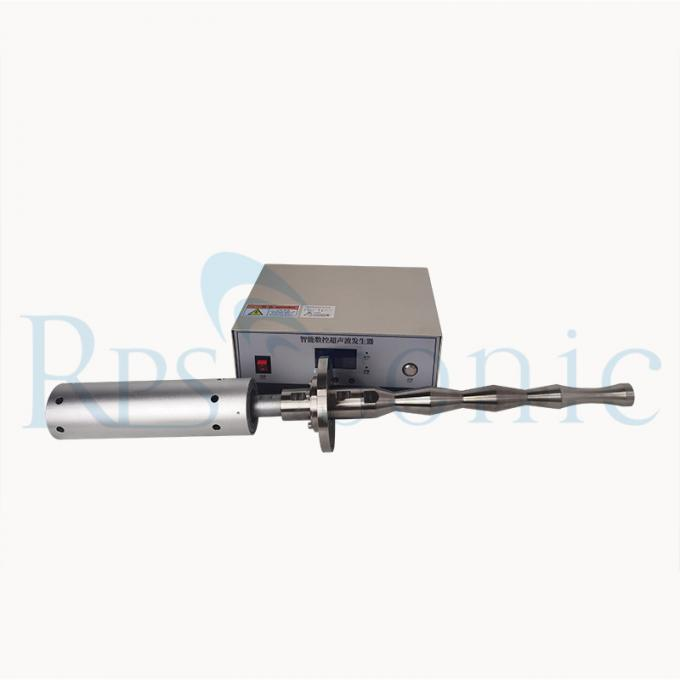
| Frequency | 20Khz | Power | 3000w*3 In Max |
|---|---|---|---|
| Horn Material | Titanium | Horn Size | Customized |
| Generator | Digital | Package | Wooden |
| Warranty | One Year | Weight | 300kg |
| High Light | CBD Oil Ultrasonic Extraction Equipment,Ultrasonic Extraction Equipment 20Khz,CBD Oil Extracting Ultrasonic Liquid Processor | ||
20Khz three in one Ultrasonic Extraction equipment for CBD oil extracting
Parameter
| Model | SONO20-1000 | SONO20-2000 | SONO15-3000 | SONO20-3000 |
| Frequency | 20±0.5 KHz | 20±0.5 KHz | 15±0.5 KHz | 20±0.5 KHz |
| Power | 1000 W | 2000 W | 3000 W | 3000 W |
| Voltage | 220/110V | 220/110V | 220/110V | 220/110V |
| Temperature | 300 ℃ | 300 ℃ | 300 ℃ | 300 ℃ |
| Pressure | 35 MPa | 35 MPa | 35 MPa | 35 MPa |
| Intensity of sound | 20 W/cm² | 40 W/cm² | 60 W/cm² | 60 W/cm² |
| Max Capacity | 10 L/Min | 15 L/Min | 20 L/Min | 20 L/Min |
| Tip Head Material | Titanium Alloy | Titanium Alloy | Titanium Alloy | Titanium Alloy |
Description
Ultrasonic extraction technology is the preferred technique for isolating bioactive compounds from plants. Ultrasound refers to those mechanical sound waves with frequencies above 20 kHz but less than 10 MHz. Ultrasonic extraction typically uses a smaller frequency range (16 kHz-100 kHz), as higher frequencies can lead to excess energy, which can lead to degradation of active components in plant structures.
Sonication enables complete extraction, resulting in high extraction yields in very short extraction times. As an efficient extraction method, ultrasonic extraction saves both cost and time while yielding high-quality extracts for use in food, supplements, and pharmaceuticals.
Working principle
Ultrasonic extraction is based on the working principle of ultrasonic cavitation and is a purely mechanical treatment. Similar to high shear mixers, sonotrodes generate mechanical shear forces only in the process medium. Ultrasonic extraction itself is a non-thermal, chemical-free extraction technique.
Ultrasonic cavitation is sonic or ultrasonic cavitation that occurs at high power, based on repeated high and low pressure cycles. The alternating high and low pressure cycles of sonication 20,000 times per second create intense shear forces and liquid jets. This extreme stress overcomes the selectivity of the membrane, perforates and disrupts the cell wall, and results in high-quality transport between the inner cell and the surrounding solvent. With ultrasonic extraction, higher yields and shorter extraction times can be achieved. Since ultrasonic extraction is a repeatable process, extraction results can be repeated for standardized extraction quality.
Ultrasonic cavitation can locally lead to extreme conditions such as very high differential pressures and high shear forces. When cavitation bubbles burst onto the surface of solids (e.g. particles, plant cells, tissues, etc.), microjets and inter-particle collisions can produce effects such as particle rupture, sonoporation (perforation of cell walls and membranes), and cellularity. Furthermore, the bursting of cavitation bubbles in liquid media creates turbulence and agitation, which facilitates mass transfer between the interior of the cell and the surrounding solvent. Ultrasonic radiation is an efficient way to enhance mass transfer processes, as ultrasound induces cavitation and its associated mechanisms, such as micromotion induced by liquid jets, compression and decompression in materials and subsequent cell wall disruption.
Effects of Ultrasonic Extraction
Ultrasonic Cell Disruption and Increased Mass Transfer Ultrasound can assist the extraction process by cell disruption and enhanced mass transfer in the boundary layer around the solid matrix. As a perforation of cell walls and membranes, ultrasound can enhance the permeability of cell walls and membranes, often an intermediate step before cells are completely destroyed by ultrasound.
Mechanical effects of ultrasound-induced cavitation, such as heat and pressure differences, shock waves, shear forces, liquid jets, and microfluidics, enhance solvent penetration into the interior of cells and improve mass transfer between cells and solvents, allowing The intercellular material is transferred to the solvent.









Ultrasonic Welding Equipment Ultrasonic Welding Transducer Ultrasonic Welding Converter Ultrasonic Liquid Processor Ultrasonic Cutting Equipment Ultrasonic Spray Nozzles Ultrasonic Power Supply Ultrasonic Soldering Equipment Ultrasonic Welding Horn Ultrasonic Assisted Machining Ultrasonic Testing Equipment
content is empty!